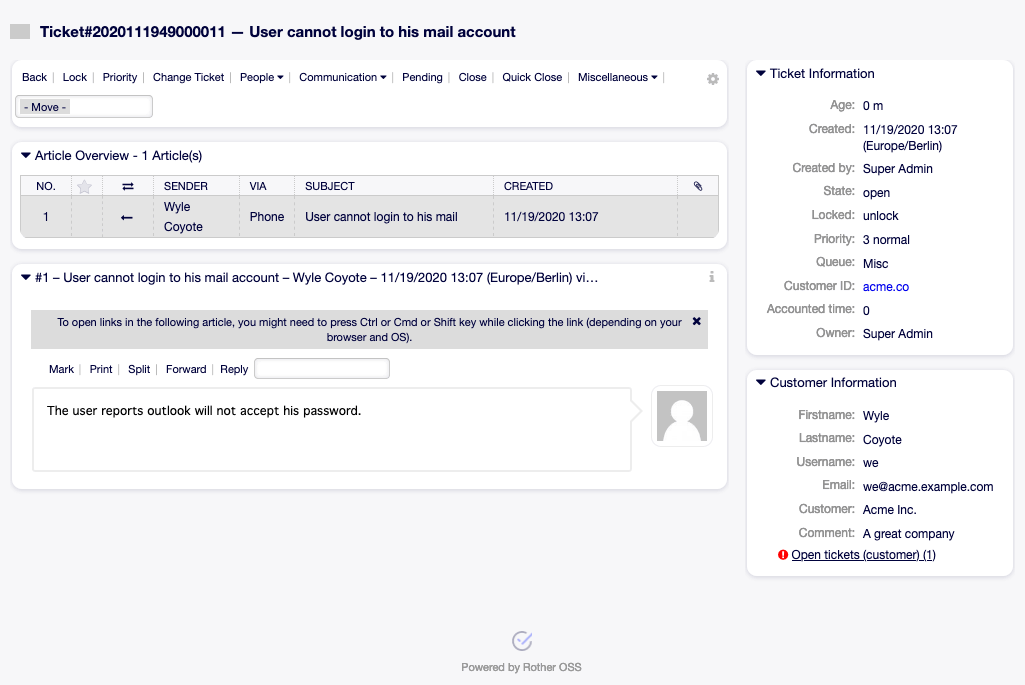Ticket Settings¶
A ticket is similar to a medical report created for a hospital patient. When a patient first visits the hospital, a medical report is created to hold all necessary personal and medical information on him. Over multiple visits, as he is attended to by the same or additional doctors, the attending doctor updates the report by adding new information on the patient’s health and the ongoing treatment. This allows any other doctors or the nursing staff to get a complete picture on the case at hand. When the patient recovers and leaves the hospital, all information from the medical report is archived and the report is closed.
Ticket systems such as OTOBO handle tickets like normal emails. The messages are saved in the system. When a customer sends a request, a new ticket is generated by the system which is comparable to a new medical report being created. The response to this new ticket is comparable to a doctor’s entry in the medical report. A ticket is closed if an answer is sent back to the customer, or if the ticket is separately closed by the system. If a customer responds again on an already closed ticket, the ticket is reopened with the new information added.

Ticket Zoom Screen
Every ticket is stored and archived with complete information. Since tickets are handled like normal emails, attachments and contextual annotations will also be stored with each email. In addition, information on relevant dates, employees involved, working time needed for ticket resolution, etc. are also saved. At any later stage, tickets can be sorted, and it is possible to search through and analyze all information using different filtering mechanisms.